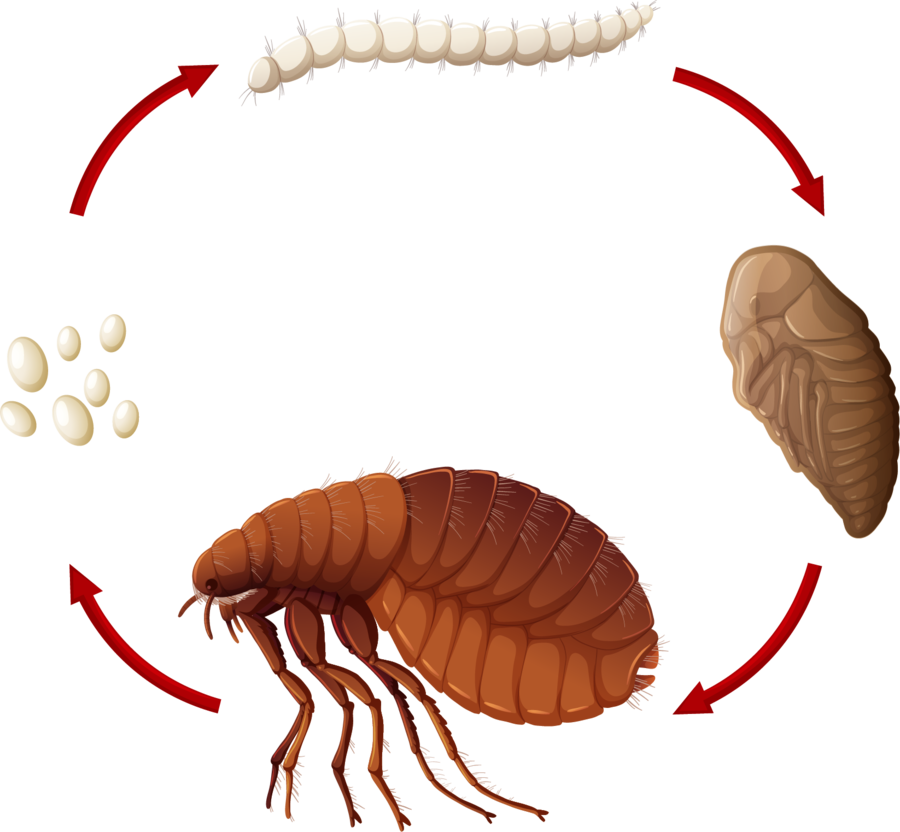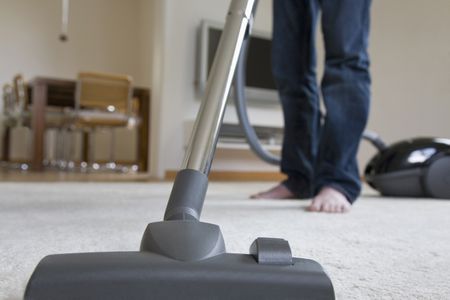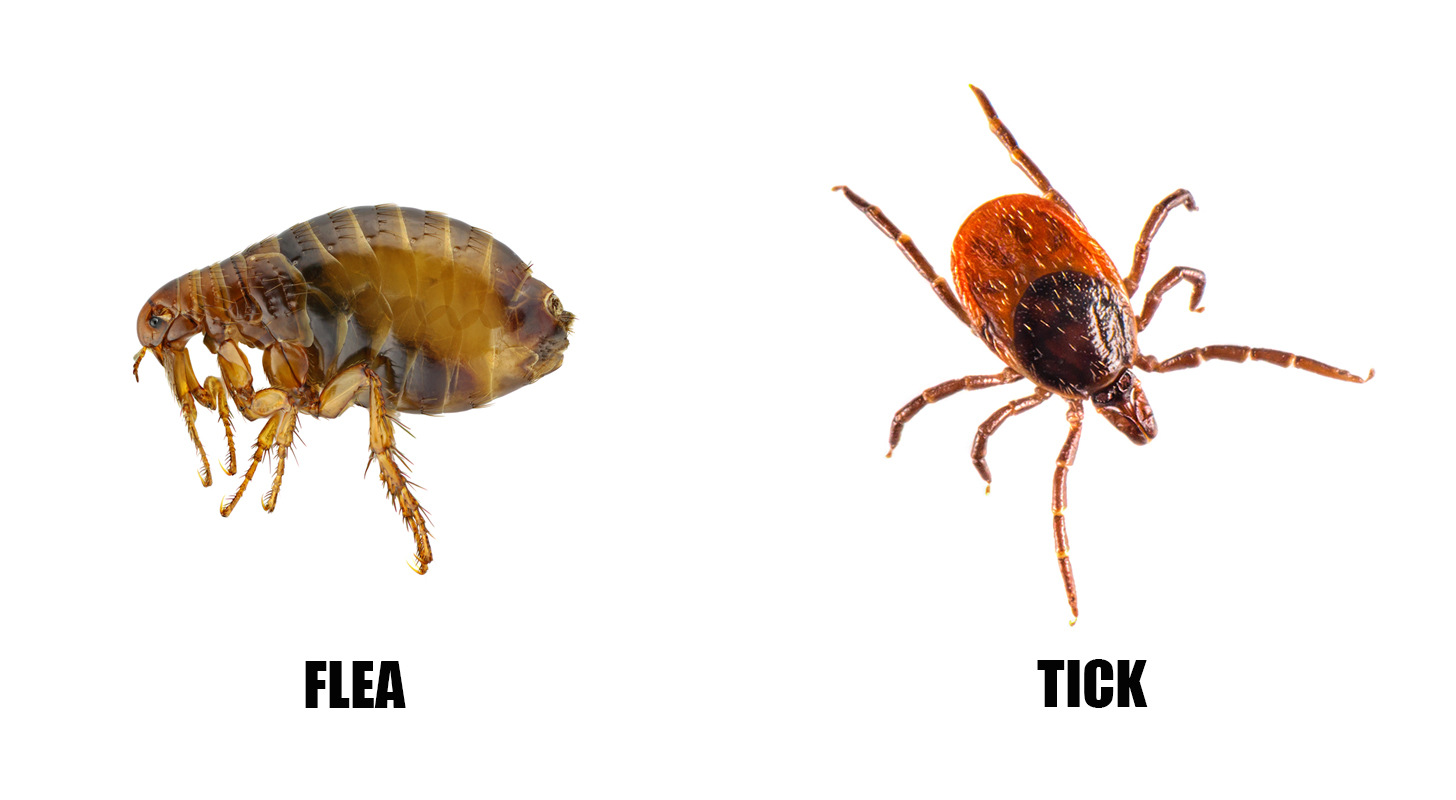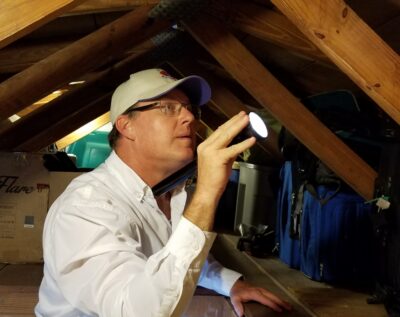
The Flea Problem
Fleas are hard-shelled parasites that live off the blood of hosts such as dogs, cats, and other warm-blooded animals. Our warm, humid environment makes this the perfect destination for fleas which thrive—unfortunately—year-round.
There are over 2,000 species of fleas, but the cat flea is the one most likely causing problems for your pet (cat or dog) and in your home.
However, there are also human fleas, sticktight fleas, and a few dog fleas that you will find in Florida.
Fleas are generally only considered nuisances. They mainly cause allergy and dermatological problems for pets and humans; they rarely transmit disease. Pet behavior, such as scratching, can give early detection signs of flea infestations.
We understand how frustrating it is to try to eliminate fleas on your own with flea meds for your pets and cleaning your home, even fogging it. Our professional services at Heath Pest Control give us the ability to attack the problem on all fronts and provide more lasting relief for you and your pets.

What you need to know about dealing with a flea problem
To effectively control fleas, you have to remove them from your pet and home—not just the pet alone. And both pet and home should be treated at the same time to reduce flea populations.
Flea populations are very difficult to control. A female flea can lay up to fifty eggs per day, and pupa can stay safely cocooned for up to a year. They can go up to two weeks without a meal and still survive. They are extremely hardy creatures!
In severe infestations, treating outdoor spaces and yards may be necessary. When removing fleas, you want to make sure to remove eggs, developing and adult fleas, as well as flea feces (“flea dirt”), which the larvae feed on.
Some tips for controlling fleas:
- Sweep tile or wood floors, and vacuum carpets, rugs, and furniture.
- Vacuuming will not eliminate flea populations, but will help keep them reduced. Vacuums remove eggs, larvae, adults, and flea dirt, but not pupae, which stick to the carpet fibers. Steam cleaners are usually more effective.
- Use carpet spray – Spray carpets and upholstery in the home.
- Fleas love dark places, so spray under furniture and in crevices.
- Fleas also gravitate to where your pet sleeps. Clean that area thoroughly and regularly.
What we do to control your flea problem
Heath Pest professionals will treat your home taking care to remove eggs, larvae, pupae and flea dirt as well as the fleas themselves. In that same treatment period, we treat the outside of the home and surrounding yard to remove fleas and create an unfriendly environment for them. This reduces the likelihood of their re-entering your home for several months.
Particularly if you have an indoor-outdoor pet, we recommend regular treatments to keep the fleas away.


Cat Flea
The most common type of flea in Florida is the cat flea. Found all over the world, the cat flea is the one typically found on dogs and cats in the United States. The wingless insect is reddish brown to black and compressed from side to side to allow them to travel through thick fur. Their strong legs are built to jump and run through the hair, fur or feathers of their hosts. Cat fleas live up to 25 days on hosts as adults, feeding on blood that helps them produce eggs. They can cause allergic dermatitis and tapeworms. Though it rarely happens, they can also transmit murine typhus or plague to people.
Dog Flea
The dog flea is more common in Europe than the United States, but a few have been found in Florida. They are so similar to cat fleas that differences can only be seen under a microscope. Found mostly on dogs, wolves and foxes in Europe, Africa and Asia, they are capable of producing the same diseases as cat fleas.

Human Flea
Thankfully, the human flea was more common in the 1500s when conditions were less sanitary, but they are still found on short-haired domestic animals such as pigs and dogs. They are the type of flea that feeds on human hosts and can carry illnesses including dermatitis, allergic reactions, tapeworms, and plague. While cat and dog fleas can also feed on humans, they aren’t built to live on creatures with as little hair as humans, but the human flea is able to hang onto humans well enough to live on them.
Sticktight Flea
Sticktight fleas are known to burrow their heads underneath the skin of animals such as birds, dogs, cats, pigs, horses, and humans, making them difficult to remove. In this way, they are similar to ticks but much smaller. Often found around the eyes, comb, and waffles of chickens and on bare spots of other birds, sticktight fleas can spread to dogs that are around poultry, sticking in their ears and between the toes. Though not known to carry disease, the dark brown flea can cause infections that lead to swollen eyes, while young animals can develop anemia when sticktight fleas feed on them.

TESTIMONIALS
“Unfortunately we had fleas all over our new house, brought in by a dog we babysat. I immediately called Heath Pest Control (who was already my pest guy) to schedule an emergency appointment, to which he clearly explained to me my options with his company, but also my options of trying to deal with it myself. And through his guidance and information, I was able to rid my house of fleas on my own. It was very refreshing to have someone who was honest just trying to help me, instead of just trying to make money off of me. I will always use Heath Pest Control, And will always recommend them to my friends and family.” (Amanda Robinson)

